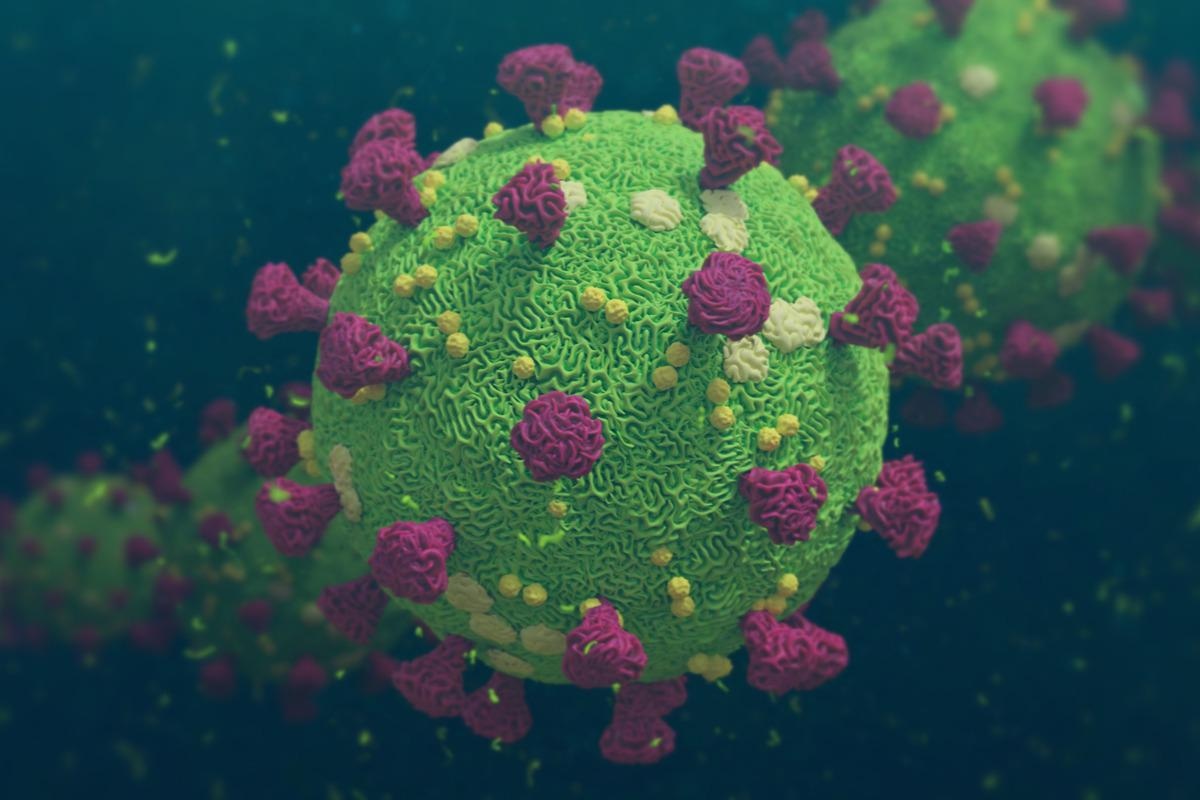In a recent study posted to the bioRxiv* preprint server, researchers performed an in situ analysis to evaluate the correlation between the cluster of differentiation 48 (CD48) expression and coronavirus disease 2019 (COVID-19).

Background
COVID-19 is a pulmonary-centered systemic condition caused by the severe acute respiratory syndrome coronavirus 2 (SARS-CoV-2). CD48, a co-signaling receptor, exists as both soluble (sCD48) and membrane-bound (mCD48) forms in the serum and peripheral blood, respectively. It is reported to be altered in inflammatory respiratory disorders such as influenza, asthma, pneumonia, and viral infections caused by measles, varicella, and Epstein Barr virus (EBV) infections. Therefore, the authors aimed to determine the CD48 expression in COVID-19 patients.
About the study
In the present study, researchers evaluated the changes in CD48 expression due to COVID-19 in situ.
Autopsied pulmonary samples were obtained from 28 COVID-19 patients during the initial COVID-19 wave between March 2020 and May 2020. These post-mortem tissues were organized into tissue microarrays (TMA) for transcriptomic evaluation and compared with five arrayed samples each of influenza viral pneumonia, pneumococcal pneumonia, other diffuse alveolar damage (DAD) cases, and healthy lungs.
The TMAs were subjected to immunohistochemistry (IHC) analysis, in which tissues were categorized into four histological patterns. Patterns one and two indicated less than and more than 10% CD48+ lymphocytes in the alveolar septa, respectively. Patterns three and four indicated subtle and heavy CD48+ lymphocyte exudation into the intra-alveolar space, respectively.
Additionally, peripheral blood was obtained from 111 and 18 COVID-19 active and recovered patients, respectively, and 26 controls patients. Based on disease severity, COVID-19 was classified as mild (n=26), moderate(n=20), severe (n=49), and critical (n=16) for the patients. Further, gene expression profiling (GEP) and in situ SARS-CoV-2 hybridization were performed. The messenger ribonucleic acid (mRNA) levels of CD48 and its high-affinity ligand 2B4 were evaluated using polymerase chain reaction (PCR) in COVID-19 cases and controls.
Leucocytes, namely mononuclear cells and granulocytes, were isolated from the blood samples and subjected to flow cytometry (FC). The serological hemoglobin, sCD48, interleukin-6 (IL-6), C-reactive protein (CRP) levels, ferritin, and D-dimer levels were quantified using enzyme-linked immunosorbent assays (ELISA) to determine the association between altered CD48 expression and COVID-19 severity. The mCD48 levels on the T-cells, B-cells, natural killer (NK) cells, monocytes, and neutrophils from the blood samples of SARS-CoV-2-positive patients and controls were assessed.
Results
The pulmonary autopsied COVID-19 specimens showed increased CD48 mRNA expression and CD48+ lymphocyte infiltration. Likewise, mCD48 and sCD48 levels were significantly increased for all the evaluated immune cells independently of disease severity. However, CD48 mRNA was not significantly associated with the viral titers.
A substantial increase in neutrophils with a decrease in lymphocytes and eosinophils was observed in COVID-19 patients. Additionally, the IL-6 and CRP levels were significantly higher in SARS-CoV-2 infections, with a corresponding increase in severity of infection. In addition, severe and critical COVID-19 patients showed decreased hemoglobin and increased D-dimer and ferritin levels.
While a positive association was observed between CD48 mRNA and NK and T cells’ genes, 2B4 mRNA levels were statistically insignificant in SARS-CoV-2-positive patients in comparison to other pulmonary pathologies, except influenza, which showed decreased levels.
In the IHC analysis, CD48+ cells most predominantly infiltrated the SARS-CoV-2-positive tissues, and the majority of lung samples showed pattern four, while SARS-CoV-2-negative lungs showed pattern three, despite CD48 negative cellular infiltration.
While mCD48 expression was double in NK-cells and monocytes, it was negligible in neutrophils and did not depend on COVID-19 severity, an exception being B lymphocytes that showed higher mCD48 in mild and moderate infections, compared to critical or severe COVID-19. The sCD48 levels were double in SARS-CoV-2-positive patients compared to controls, irrespective of disease severity.
A moderately positive correlation was observed between sCD48 levels with mCD48 for monocytes and IL-6 in SARS-CoV-2-positive patients. Likewise, mCD48 levels were positively correlated with NK and T cells. However, sCD48 and CRP levels were positively but weakly correlated.
Conclusion
To summarize, CD48 expression was significantly upregulated in SARS-CoV-2-infected pulmonary and lymphocytes concordant with the peripheral blood monocytes and lymphocytes, along with the increased sCD48 levels in the serum of COVID-19 patients. These findings are indicative of a decreased anti-viral response. Additionally, high sCD48 levels in mild and severe COVID-19 indicate that CD48 can be considered a marker of symptomatic COVID-19 and a target for developing COVID-19 therapeutics.
*Important notice
bioRxiv publishes preliminary scientific reports that are not peer-reviewed and, therefore, should not be regarded as conclusive, guide clinical practice/health-related behavior, or treated as established information.
-
Pahima, H. et al. (2022) "COVID-19 patients have increased levels of membrane-associated and soluble CD48". bioRxiv. doi: 10.1101/2022.03.18.484843. https://www.biorxiv.org/content/10.1101/2022.03.18.484843v1
Posted in: Medical Science News | Medical Research News | Disease/Infection News
Tags: Asthma, Blood, Coronavirus, Coronavirus Disease COVID-19, covid-19, C-Reactive Protein, Cytometry, D-dimer, Enzyme, Flow Cytometry, Gene, Gene Expression, Genes, Hemoglobin, Hybridization, IHC, Immunohistochemistry, Influenza, Interleukin, Interleukin-6, Ligand, Lungs, Lymphocyte, Measles, Membrane, Neutrophils, Pneumonia, Polymerase, Polymerase Chain Reaction, Protein, Receptor, Respiratory, Ribonucleic Acid, SARS, SARS-CoV-2, Severe Acute Respiratory, Severe Acute Respiratory Syndrome, Syndrome, Therapeutics, Virus

Written by
Pooja Toshniwal Paharia
Dr. based clinical-radiological diagnosis and management of oral lesions and conditions and associated maxillofacial disorders.
Source: Read Full Article